In review, this is a business cycle. We know that it is normal for the economy to go through periods of growth and contraction.
Over time, GDP tends to grow, represented by the gray line, which shows the overall growth trend.
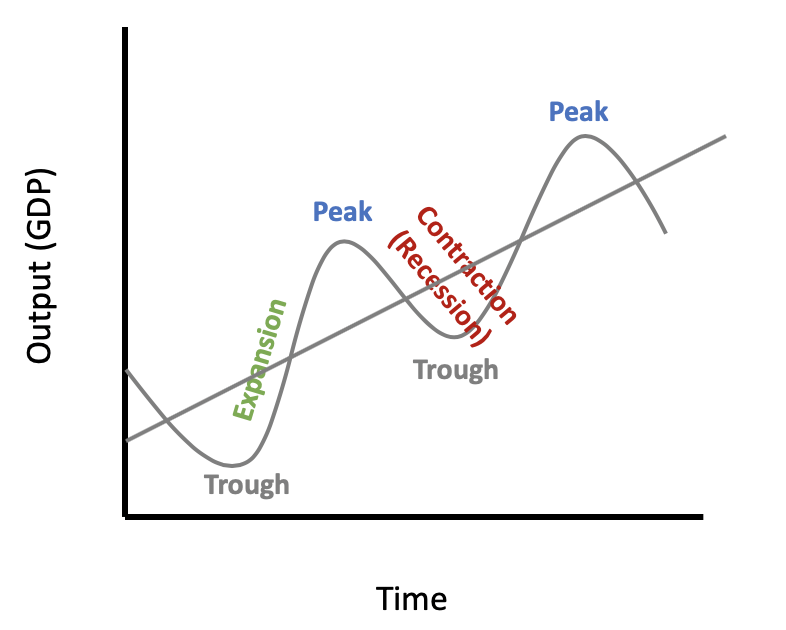
As you can see, there are times the GDP grows quickly, and times that it can shrink.
When it is growing more quickly than the growth trend, this is an expansion period, and when it is shrinking, this is known as a contraction.
Many economists feel that both monetary and fiscal policy are important to reduce the severity of business cycles, to ensure that expansionary periods are not too rapid with a lot of inflation and that contractions do not become so severe that they lead to recessions or depressions.
Therefore, it is important that either the government and/or the Federal Reserve System step in and enact some policies.
Let's start with monetary policy and discuss the pros and cons.
The Federal Open Market Committee, or FOMC, is a much smaller group of people than the overall federal government. They meet and can make decisions immediately.
Therefore, since it is not a political process, the time it takes to implement monetary policy is fairly minimal.
EXAMPLE
When the housing market crisis occurred in the early 2000s, the Fed took serious and quick action. First of all, they made sure that banks were solvent and could continue making loans. They also took measures to lower rates in the economy, to encourage people to continue borrowing and spending money.Many believe that without these kinds of measures taken by our Federal Reserve System, we could have been headed for another Great Depression.
Although it does not take long to implement monetary policy, there can be a significant amount of time for consumers to see the intended effects of that monetary policy.
Since monetary policy works mainly through these interest rates and the money supply, there can be a significant lag between implementation and the time when consumers or businesses start altering their behaviors.
Because of this lag, and because we cannot predict a recession ahead of time, monetary policy generally cannot prevent a recession from happening.
There are also issues with predictions. Changing monetary policy can alter the outcome of investment decisions that individuals and businesses are making.
When a business or individual decides to make an investment purchase, they do so because they have predicted that it is going to be a profitable one. Often that profitability has to deal with current interest rates, for instance, or things that monetary policy could very well change.
Suddenly, an investment decision may not turn out to be profitable.
On the contrary, someone who may actually have made a bad investment decision could actually luck out and benefit from changes in monetary policy in this way.
Therefore, there are some major issues with the predictability component. To make things more predictable for businesses or investors, some suggest that monetary policy should be more rule-based and prescriptive, meaning that if "x" happens in the economy, then "y" monetary policy will be used.
Now let's turn our attention to a discussion of fiscal policy pros and cons.
EXAMPLE
Fiscal policy does not work through interest rates, though, so if the government cuts taxes, for example, and you get an additional $50 in your next paycheck, you will either immediately spend it or save it.Therefore, the government can determine fairly quickly whether their policy is going to work or not.
EXAMPLE
Along with the Fed, the government took many actions to ensure that the recession following the housing crisis did not result in an even lengthier depression. They took measures to cut taxes and implement stimulus programs, like an $8,000 credit for first-time homebuyers.Again, these actions can be successful in making people go out and spend money without being afraid to do so.
Fiscal policy can be very influenced by politics. It can involve a considerable time lag in implementation, as political parties are debating and arguing, etc. Also, it can be subject to special interests.
Therefore, by the time fiscal policy is decided, it can actually be too late.
Here is another thing to consider. To finance expansionary fiscal policy, the government generally has to borrow money, as we have discussed in other tutorials.
They become additional demanders for loans in an otherwise private market, as shown in this graph for loanable funds.
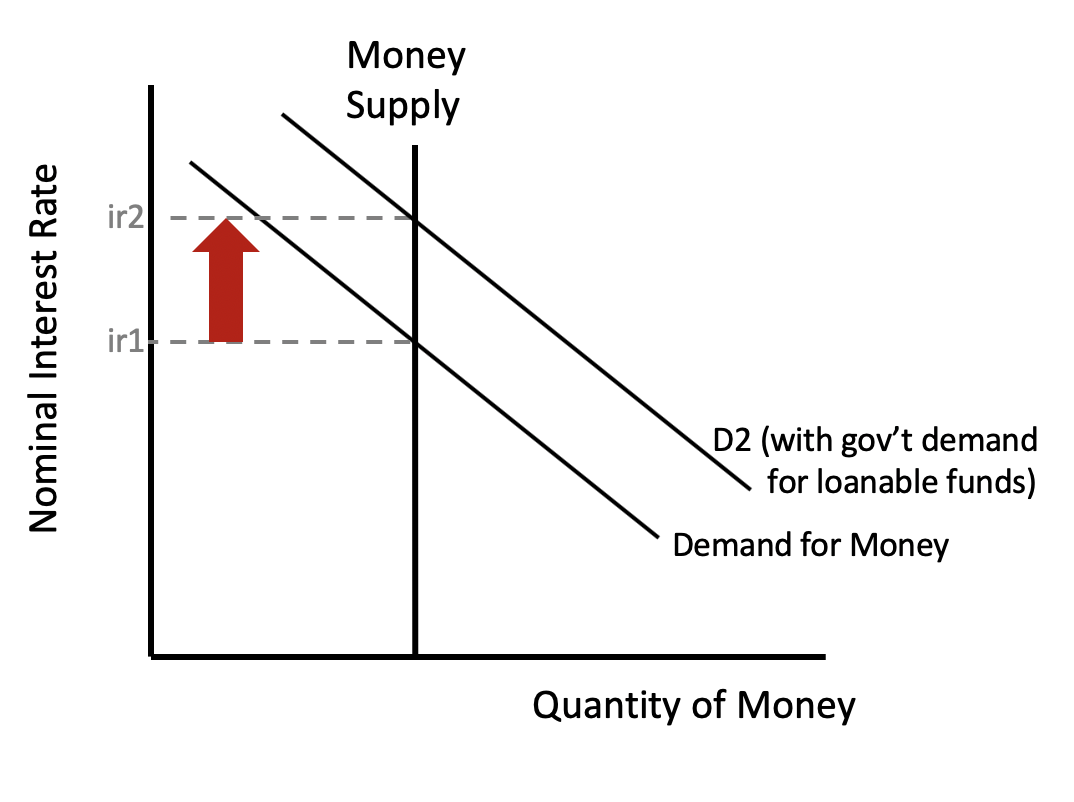
When they become additional demand in this market for loans, this can drive up interest rates. This is known as "crowding out." Essentially, the government is pushing consumers out of the way, crowding us out from getting lower interest rates because they are now demanding loans as well.
Others point to the disadvantages of stimulating aggregate demand in this way. Economists have criticized attempts to achieve long-run economic growth by stimulating aggregate demand when we are already at long-run aggregate supply.
Now, it is possible to stimulate aggregate demand past the point of full potential or equilibrium in the short run.
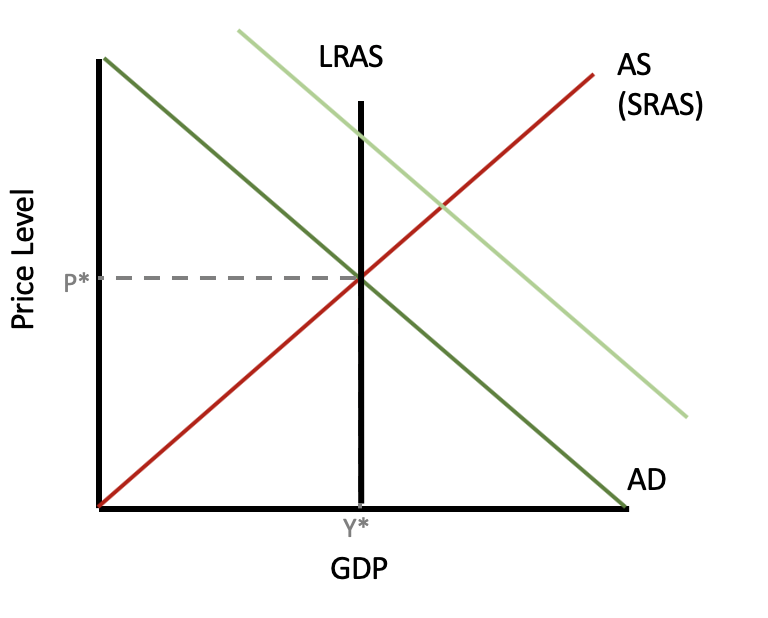
However, this is unsustainable, and in the long run, prices will rise. As prices rise, they also rise for suppliers. Therefore, suppliers can end up decreasing their ability to produce, and short-run aggregate supply shifts back to the left.
Notice where we are in the graph below. We are attempting to achieve more economic growth, but we ended up right back where we were at equilibrium, but at higher prices, or inflation in the economy.
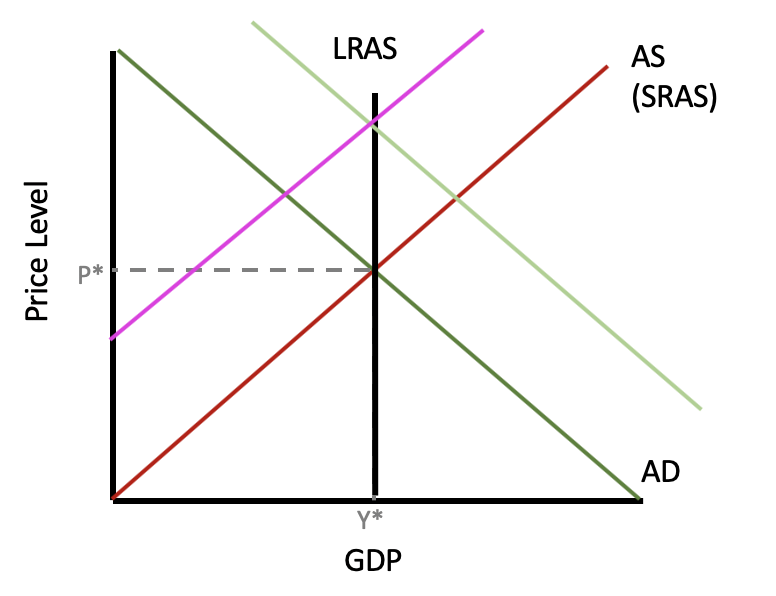
IN CONTEXT
In the 1970s and early 1980s, our government used expansionary policies to try to lower the unemployment rate.
The Phillips Curve suggests that we would experience some inflation, but that the unemployment rate would come down.
Remember, the Phillips curve shows this inverse relationship between inflation and unemployment. With lower employment, we can expect higher inflation and vice versa. As we lower inflation, unemployment tends to go up.
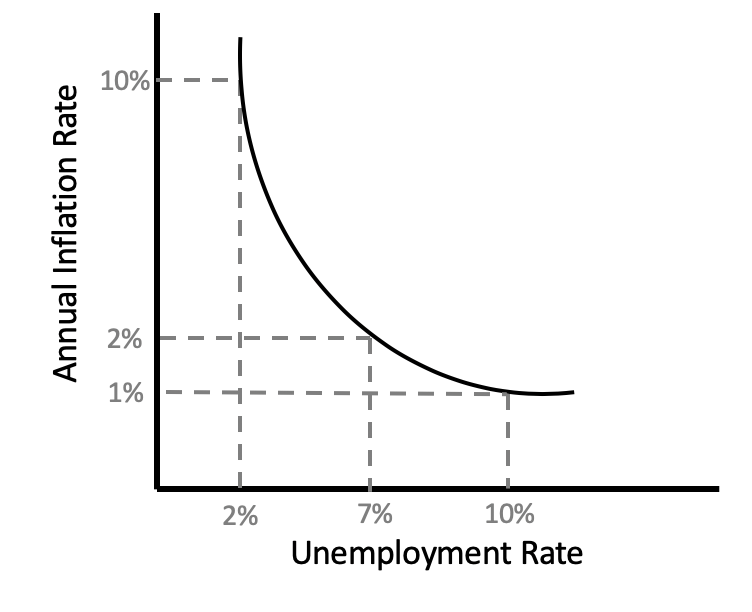
Critics of this model point to the time when our economy experienced very high rates of inflation at the same time as high unemployment, which is known as stagflation.
There were times when our inflation was well over 10% with an unemployment rate over 8%, a point that cannot be found on our initial Phillips Curve.
So, why did expansionary fiscal policies not work to lower the unemployment rate? Well, critics suggest the problem was not low demand, but instead, it was a supply shock.
There were disruptions to our supply of oil, which caused our long-run aggregate supply to shift to the left.
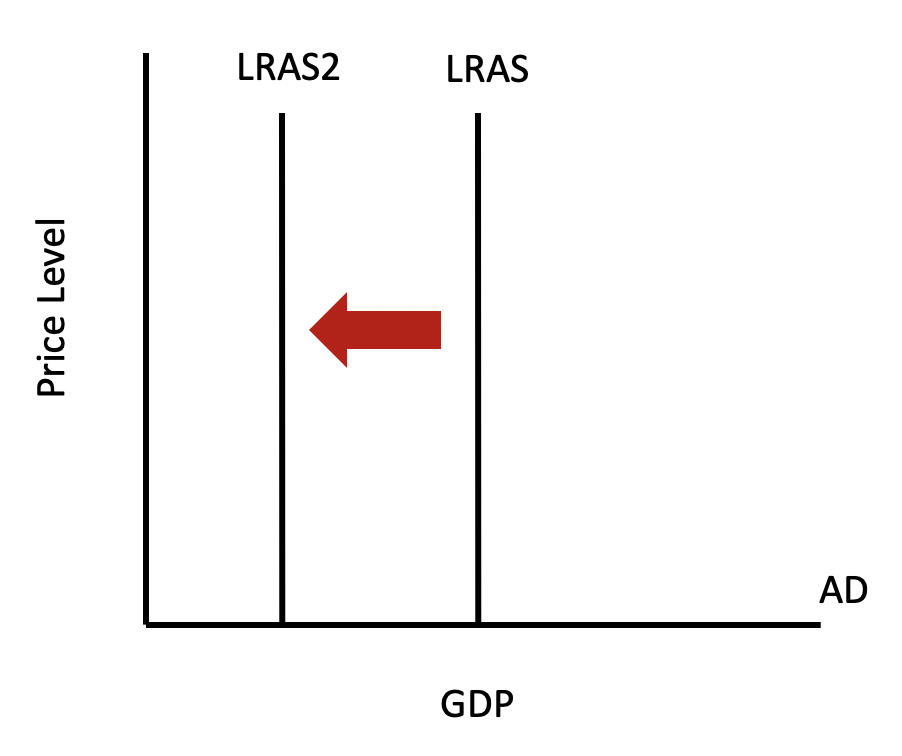
This lowered the sustainable amount our economy could produce, in terms of real GDP, which caused our economy to enter the recession.
Since the problem was not with aggregate demand, simply stimulating aggregate demand through expansionary policy did absolutely nothing to alleviate the supply shock, and it just caused inflation.
Source: Adapted from Sophia instructor Kate Eskra.